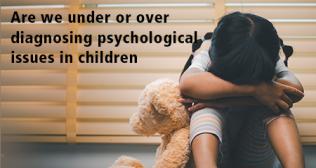
Understanding Dysphoria: A Comprehensive Guide to Symptoms and Support
Human identity is a rich and complex tapestry, woven from our experiences, beliefs, and our innermost sense of self. For most people, there is a natural alignment between how they see themselves and how their body feels. But for some, there is a profound and distressing disconnect, a persistent feeling of unease that can cast a shadow over every aspect of life. This feeling has a name: dysphoria.
Understanding this condition is essential, not just for those who experience it, but for friends, family, and society as a whole. It is a journey that calls for empathy, support, and knowledge. This guide offers a comprehensive look at dysphoria, its symptoms, causes, and the pathways to finding relief and authenticity.
What Is Dysphoria?
At its core, what is dysphoria? It is a state of profound unease or dissatisfaction. While the term can be used generally to describe a feeling of unhappiness, in a clinical context, it most often refers to Gender Dysphoria. Gender Dysphoria is the significant distress a person experiences due to a conflict between the gender they were assigned at birth and the gender with which they truly identify.
This is not a feeling of simply being uncomfortable; it is a deep-seated incongruence that can impact mental and emotional health, social interactions, and a person's ability to live a fulfilling life. It is recognized as a medical condition to ensure individuals can receive the care and support they need.
Recognizing the Dysphoria Symptoms
The experience of dysphoria is unique to each individual, but there are common signs and feelings associated with it. These dysphoria symptoms can be both emotional and behavioral, often becoming more pronounced during puberty.
Common emotional and psychological symptoms include:
- A strong and persistent feeling that one’s gender identity is different from their assigned gender.
- Intense discomfort with one's own body, particularly with primary or secondary sex characteristics (e.g., chest, genitals, facial hair).
- A powerful desire to be rid of one's sex characteristics and to have the characteristics of their identified gender.
- Feeling a deep sense of anxiety, depression, or irritability related to this internal conflict.
- A strong conviction that one has the typical feelings and reactions of a different gender.
Behavioral symptoms can include:
- A desire to be treated as their identified gender (using different pronouns, names).
- Dressing in clothing typically associated with their identified gender.
- Avoiding social situations or activities where their physical body might be on display, such as swimming.
- A strong preference for playmates and activities that align with their gender identity, especially in children.
Understanding the Gender Dysphoria Causes
The question of what causes gender dysphoria is complex, and research is ongoing. There is no single cause; instead, it is believed to result from a combination of factors that contribute to the development of a person's gender identity before birth.
The primary gender dysphoria causes being explored by scientists include:
- Biological and Genetic Factors: Evidence suggests that genetics and hormonal influences in the womb play a significant role. The development of gender identity is a complex process involving the brain, and it may unfold differently from the development of physical sex characteristics.
- Neurological Factors: Some studies indicate that the brain structure and function of transgender individuals may more closely resemble that of their identified gender rather than their assigned sex at birth.
- Psychosocial Factors: While social and environmental factors do not cause gender dysphoria, the way a person is raised and the social environment they are in can significantly impact how they experience and express their distress.
It is crucial to understand that gender dysphoria is not a choice or a lifestyle. It is an innate part of a person's identity.
Dysphoria Treatment and Pathways to Support
The primary goal of dysphoria treatment is not to "cure" or "change" a person's gender identity, but to alleviate the distress and help them align their life and body with their true self. The approach is highly individualized and focuses on affirming the person's identity.
Effective dysphoria treatment and support strategies include:
- Social Transition: This is often the first step and can involve changing one's name, pronouns, hairstyle, and clothing to match their gender identity. This social affirmation is a powerful way to reduce feelings of dysphoria.
- Psychological Support: Therapy with a mental health professional experienced in gender issues is vital. This provides a safe space to explore one's feelings, develop coping mechanisms for distress, and navigate the process of transition. Family therapy can also be beneficial.
- Medical Interventions: For many, medical treatment is a necessary step to align their physical body with their gender identity. This can include:
Hormone Therapy: Using hormones (estrogen or testosterone) to induce the secondary sex characteristics of the person's identified gender.
Gender-Affirming Surgeries: A range of surgical procedures can be performed to alter physical appearance, such as "top surgery" (chest reconstruction) or "bottom surgery" (genital reconstruction).
Living Authentically
Living with dysphoria can be an isolating and painful experience, but it is important to remember that help is available and living an authentic, happy life is possible. The journey of aligning one's external self with their internal identity is a courageous one. With access to affirming healthcare, strong support systems, and a society that embraces understanding and acceptance, individuals experiencing gender dysphoria can thrive.
Frequently Asked Questions
1. Is gender dysphoria a mental illness?
Ans. No. While it is a recognized medical diagnosis to facilitate care, gender dysphoria is not a mental illness. The distress it causes can lead to anxiety and depression, which are mental health concerns.
2. At what age can gender dysphoria appear?
Ans. It can appear at any age. Some children express feelings of dysphoria from a very young age, while for others, it may not become apparent until puberty or even adulthood.
3. Is being transgender the same as having gender dysphoria?
Ans. Not necessarily. A person can be transgender without experiencing the significant distress of clinical dysphoria. However, many transgender people do experience it at some point.
4. Can you "grow out of" gender dysphoria?
Ans. For those who experience persistent and intense gender dysphoria, especially after puberty, it is not something they typically "grow out of." It is a core part of their identity.
5. How can I support someone with gender dysphoria?
Ans. The best way to offer support is to listen without judgment, use their correct name and pronouns, and educate yourself on their experience. Your acceptance can make a world of difference.



















